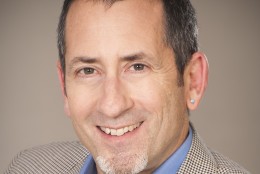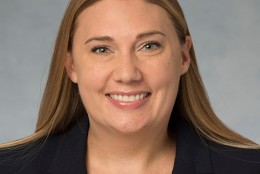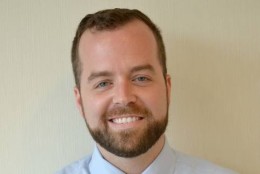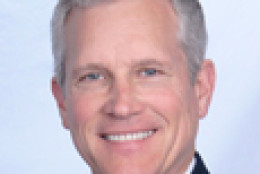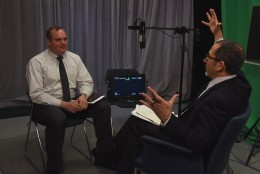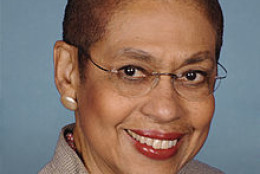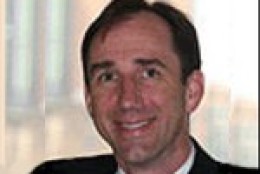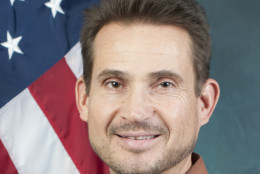Tom Temin
-
Banged-up cars and seizing ship engines. A slice of federal programs isn't going as planned.
February 08, 2016 -
Even though we've lived through a city-flattening blizzard, the advent of a bear market and umpteen presidential debates on TV, the year is still young. You still have time to do some careful planning on the financial front. Jessica Klement, legislative director of the National Active and Retired Federal Employees Association, joins Federal Drive with Tom Temin with predictions for what Congress will do to and about the federal workforce this year.
February 08, 2016 -
Agencies have more choices than ever to buy secure cloud computing services. The Federal Risk Authorization and Management Program (FedRAMP) is finding its footing in providing access to authorized vendors to provide cloud services. The General Services Administration's Matt Goodrich is the director of the FedRAMP cybersecurity program for cloud services. He tells executive editor Jason Miller on Federal Drive with Tom Temin about the progress FedRAMP has made since the summer.
February 08, 2016 -
Ethical white-hat hackers are the ones you ask to find vulnerabilities in networks so they can be fixed before the bad guys expose them. With federal agencies and contractors dealing with so many daily attacks from cyber criminals, it may be time agencies start using white hatters themselves. That's what Phil Bond, former Under Secretary of Commerce for Technology, tells Federal News Radio's Eric White on Federal Drive with Tom Temin.
February 08, 2016 -
The military services have been dithering with Congress over if and where to reduce their real estate footprint.
February 08, 2016 -
Defense Secretary Ash Carter says the Air Force plans to increase its spending on training by $1 billion over the next five years.
February 08, 2016 -
An incident in the TSA's Las Vegas "Pre store" shows data sharing and database matching don't always align the way they should.
February 08, 2016 -
To help U.S. agencies operating in the Arctic region, the National Geospatial Intelligence Agency has been releasing non-classified data to anyone who wants to use it, public or private.
February 05, 2016 -
Two years ago, a federal appeals court ruled against a financial analyst and a military commissary employee who said they’d been summarily removed from their positions without being able to contest their agencies’ decisions before the Merit Systems Protection Board. At issue is a category of federal jobs called “noncritical sensitive.” Even though those workers don’t handle classified information, the government contends that airing their cases before MSPB could expose “sensitive” information — and the label now applies to about 200,000 Defense Department workers, according to two members of Congress who say they need more due process rights. Rep. Rob Wittman (R-Va.) and Del. Eleanor Holmes Norton (D-D.C.) introduced a bill this week to make clear that MSPB is allowed to hear those employees' claims. Holmes Norton talked with Federal Drive with Tom Temin by phone about why the appeals court’s ruling needs to be overturned.
February 05, 2016 -
The government is big, with 2 million people in the civilian workforce. It's also middle-aged. Only 7 percent are under 30. Now the Office of Personnel Managment has come out with something called the Pathways Toolkit to help agencies hire greater numbers of younger people. Tim McManus, the vice president of education and outreach at the Partnership for Public Service, told Federal Drive with Temin how it's helping OPM develop the new tools.
February 05, 2016 -
After a 6-month competition, the national commission in charge of building a new World War I memorial in Washington has picked a design. The new memorial will take the form of a partial transformation of Pershing Park in downtown Washington, D.C. That site is already a tribute to Gen. Joseph Pershing, the commander of American forces in Europe. In the new memorial, his statue will be joined by walls inscribed with quotes from key World War I figures and sculptures of rank and file soldiers for a total of 116,500 cubic feet of new architecture — one for every American who died in the war. Joe Weishaar is the young architect who won the competition. His design is called “the weight of sacrifice”. He talked with Federal Drive with Tom Temin about how the design came together, and what visitors will see when construction is finished.
February 05, 2016 -
There's failure and then there's failure. Big and small. One way to prevent the big ones is to develop tolerance for the small ones along the way. That's in part the idea behind a Pentagon drive to get more commercial innovation into its so-called third offset strategy. For what this means to contractors, Larry Allen, principal at Allen Federal Business Partners spoke to Federal Drive with Tom Temin about the topic.
February 05, 2016 -
It's a big ticket item. Over five years, several big departments spent three quarters of a billion dollars to sponsor students and recent post-grads in science and engineering. They get to work in federal agencies like Defense, Energy and Health and Human Services. The program is called the Oak Ridge Institute for Science and Education. The Government Accountability Office took a look at the program and found some things that need tightening up. John Neumann, director of natural resources and environment issues at the GAO, told Federal Drive with Tom Temin about the Oak Ridge Institute and what GAO found there.
February 05, 2016 -
Though President Barack Obama announced he is proposing a 1.6 percent pay raise for federal employees in 2017, the head of the American Federation of Government Employees said it's still not enough.
February 05, 2016 -
If the White House vetted and hired Ashkan Soltani, it could not have known or expected his security clearance would not come through.
February 05, 2016

